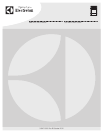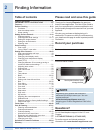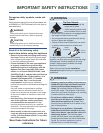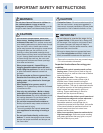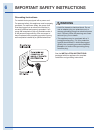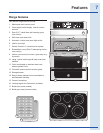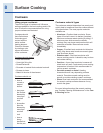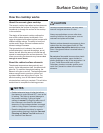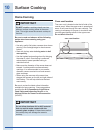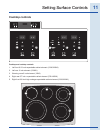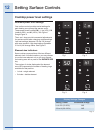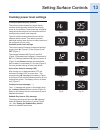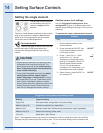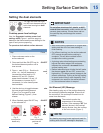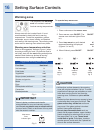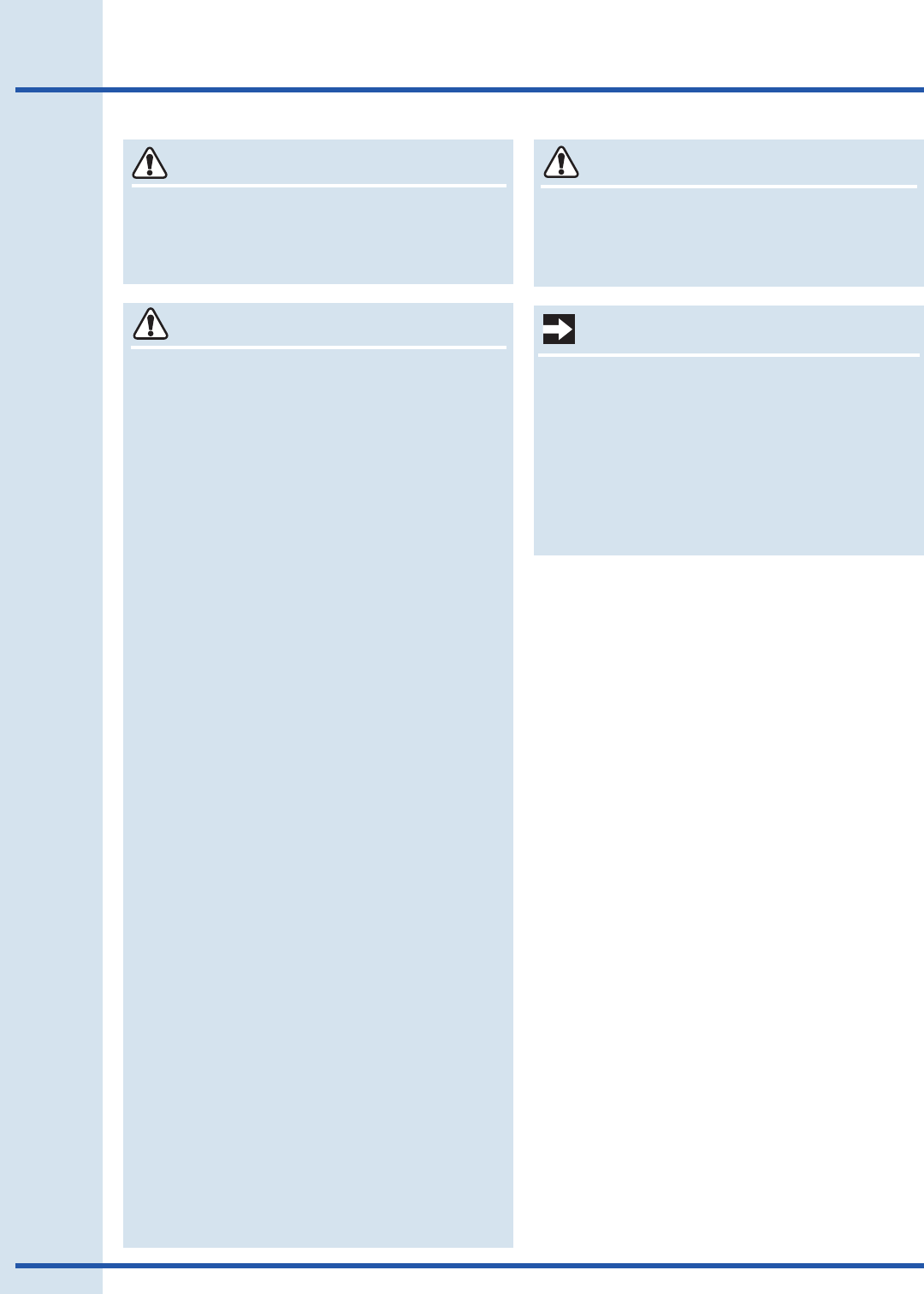
4
CAUTION
IMPORTANT SAFETY INSTRUCTIONS
IMPORTANT
WARNING
• Do not touch surface zones, areas near
these zones, heating elements or interior
surfaces of the oven. ALL surface zones and
oven heating elements may be hot even though
they are dark in color. Areas near surface
zones may become hot enough to cause burns.
During and after use, do not touch, or let
clothing or other flammable materials touch
these areas until they have had sufficient time
to cool. Among these areas are the cook top,
surfaces facing the cook top, the oven vent
openings and surfaces near these openings,
oven door and window.
• Wear proper apparel—Loose-fitting or
hanging garments should never be worn
while using the appliance. Do not let clothing
or other flammable materials contact hot
surfaces.
• Do not use water or flour on grease fires—
Smother the fire with a pan lid, or use
baking soda, a dry chemical or foam-type
extinguisher.
• When heating fat or grease, watch it
closely. Fat or grease may catch fire if allowed
to become too hot.
• Use only dry potholders - Moist or damp
potholders on hot surfaces may result in
burns from steam. Do not let potholders touch
hot heating elements. Do not use a towel or
other bulky cloth instead of a potholder.
• Do not heat unopened food containers -
Buildup of pressure may cause container to
burst and result in injury.
• To avoid a possible fire hazard, never use
your appliance for warming or heating a
room.
• Do not cook foods directly on the oven
bottom. To avoid damaging the oven interior
always use proper cookware and always use
the oven racks.
CAUTION
• Protective liners—Do not use aluminum foil to
line the oven bottom, except as suggested in
the manual. Improper installation of these liners
may result in a risk of electrical shock, or fire.
Important instructions for using your
cooktop
• Know which control operates each surface
heating zone. Place a pan of food on the unit
before turning it on, and turn the zone off before
removing the pan.
• Use proper pan size—This appliance is
equipped with one or more surface units of
different sizes. Select utensils having flat
bottoms large enough to cover the surface unit
heating element. The use of undersized utensils
will expose a portion of the heating element to
direct contact and may result in ignition of
clothing. Proper relationship of utensil to
element will also improve efficiency.
• Utensil handles should be turned inward and
not extend over adjacent surface elements—
To reduce the risk of burns, ignition of
flammable materials, and spillage due to
unintentional contact with the utensil, the handle
of the utensil should be positioned so that it is
turned inward, and does not extend over
adjacent surface units.
• Never leave surface elements unattended at
high heat settings—Boilovers cause smoking
and greasy spillovers that may ignite, or a pan
that has boiled dry may melt.
• Do not attempt to operate the range during
a power failure. If the power fails, always turn
off the range. If the range is not turned off and
the power resumes, the range will begin to
operate again. Once the power resumes, reset
the clock and oven function.
• Be sure to always have an appropriate foam-
type fire extinguisher available, visible and
easily accessible located near the appliance.
• Remove the oven door from any unused range
if it is to be stored or discarded.
Do not store items of interest to children in
the cabinets above a range or on the
backguard of a range. Children climbing on the
range to reach items could be seriously injured.



